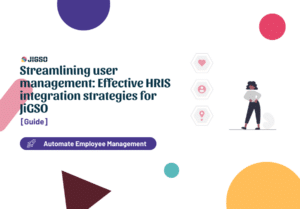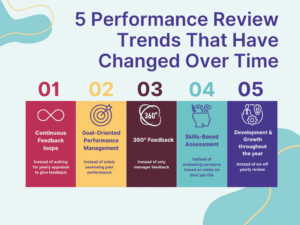Introduction
In today’s competitive business landscape, the ability to set and achieve goals effectively is crucial for driving organisational success and personal growth. Whether you’re a seasoned executive, a team leader, or an individual contributor, mastering the art of goal-setting can significantly impact your productivity and performance.
At the heart of effective goal-setting lies the SMART framework—a powerful methodology that helps transform abstract aspirations into concrete achievements. SMART stands for Specific, Measurable, Achievable, Relevant, and Time-bound. Each component of the SMART criteria plays a vital role in ensuring that goals are clear, actionable, and aligned with both individual and organisational objectives.
Why Set SMART Goals?
Setting goals can be challenging due to the long-term nature of many objectives, which makes it difficult to assess progress. The SMART framework offers a structured solution to these challenges.
In this blog post, we’ll delve into each element of the SMART framework and its role in enhancing goal clarity and effectiveness. The components of SMART—Specific, Measurable, Achievable, Relevant, and Time-bound—each contribute to creating goals that are clear, trackable, realistic, aligned with organizational objectives, and time-sensitive, fostering both urgency and accountability.
1. Specific Goals
Goals that are specific answer the questions of “what,” “why,” and “how.” They provide clarity and focus by defining what needs to be achieved. This clarity helps in avoiding ambiguity and ensures that everyone involved understands the desired outcome thoroughly.
Setting specific goals involves outlining the precise objectives and articulating the reasons behind them. It also entails strategizing how these goals will be accomplished, thereby guiding efforts towards a clear and measurable endpoint.
Do: Clearly define what you want to accomplish with precise details and objectives. For example, instead of saying “Increase sales,” a specific goal would be “Increase monthly sales revenue by 15%.”
Don’t: Use vague or general statements that leave room for interpretation. For instance, “Improve customer satisfaction” is vague and could mean different things to different people without specific metrics or actions.
2. Measurable Goals
Measurable goals include clear criteria for tracking progress and determining success. They provide a benchmark against which achievements can be evaluated.
Setting measurable goals involves establishing specific metrics or criteria that will be used to track progress and assess the attainment of the goal. This not only allows for ongoing monitoring but also enables adjustments to be made as necessary to stay on track.
Do: Establish concrete criteria or metrics for measuring progress and success. For example, “Achieve a customer satisfaction rating of 90% or higher based on quarterly surveys.”
Don’t: Set goals that are difficult to quantify or track progress towards. Avoid statements like “Enhance team collaboration” without specifying how collaboration will be measured or assessed.
3. Achievable Goals
Achievable goals are realistic and attainable within the constraints of resources, time, and capabilities. They serve as motivating milestones that provide teams with a tangible sense of accomplishment.
Setting achievable goals involves carefully assessing current resources, capabilities, and market conditions to ensure they are within reach. This approach not only motivates teams but also fosters a sense of confidence and momentum towards success.
Do: Set goals that are challenging yet realistic given available resources and constraints.
Don’t: Aim for goals that are beyond current capabilities or resources without a clear plan to acquire them. Avoid setting goals like “Double our customer base in three months” if the sales team lacks the necessary manpower and support.
4. Relevant Goals
Relevant goals are crucial as they align closely with organizational objectives and strategic priorities. They ensure that efforts are concentrated on activities that directly contribute to business success and overall growth.
Setting relevant goals involves careful consideration of how each goal supports the company’s mission, vision, and long-term strategy. This alignment helps prioritize initiatives that have the greatest impact on achieving business objectives and maintaining competitive advantage.
Do: Ensure that the goal aligns with the overall mission, vision, and strategic objectives of the organization.
Don’t: Pursue goals that are not directly related to your organization’s mission or long-term plans. Avoid goals like “Launch a new product line in an unrelated market segment” if it does not align with your core business strategy.
5. Time-bound Goals
Time-bound goals are critical for creating urgency and accountability within an organisation. They set specific deadlines that prioritise tasks and drive timely progress towards objectives.
Setting time-bound goals involves defining clear timelines or deadlines for achieving targets. This clarity not only helps in prioritising actions but also ensures that efforts are focused and progress can be measured effectively.
Do: Set a clear timeframe for achieving the goal to create a sense of urgency and accountability. For example, “Reduce customer support response time to less than 24 hours by the end of the next quarter.”
Don’t: Leave the timeline open-ended or too vague, which can lead to procrastination or lack of focus. Avoid goals like “Improve employee training” without specifying when this improvement should be achieved.
Conclusion
Mastering the art of SMART goal-setting is a fundamental skill that can propel individuals and organisations towards success. By incorporating the SMART framework into your performance management strategy and leveraging modern software tools, you can enhance clarity, accountability, and overall effectiveness in goal achievement.



